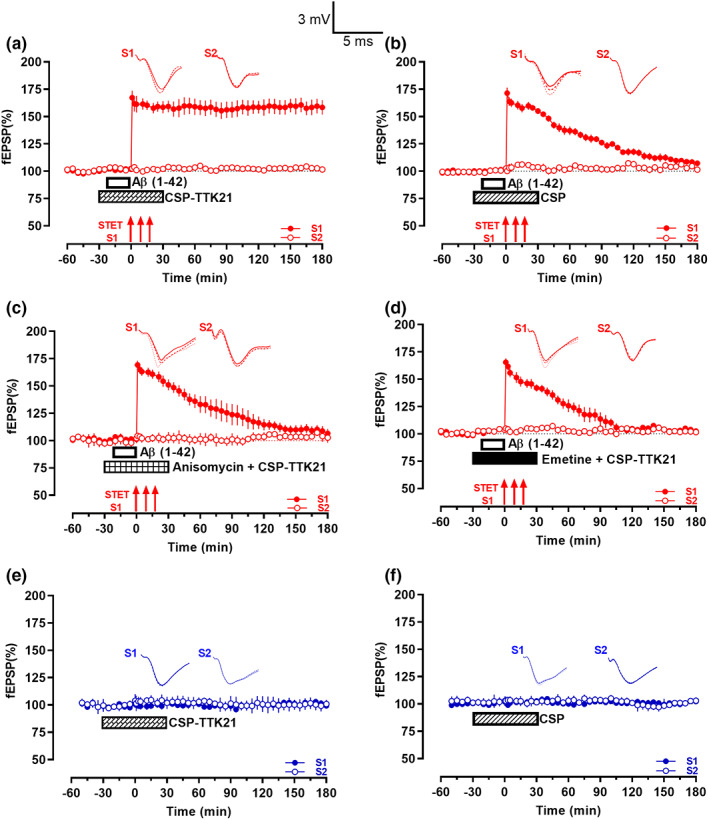FIGURE 2.

CSP‐TTK21 rescued Aβ(1–42) oligomers‐induced LTP deficits. (a) The CBP/p300 activator CSP‐TTK21 (0.36 μg/ml; crisscross box) was bath‐applied to hippocampal slices 30 min before and 30 min after the first STET tetanus train. In between, Aβ(1–42) oligomers (200 nM; open box) were co‐applied 20 min before STET. In the presence of CSP‐TTK21, STET (solid arrows) led to a late‐LTP that persisted for 3 h (n = 7). (b) Similar to that in (a) except CSP (0.36 μg/ml; striped box) was applied instead of CSP‐TTK21. STET led to an early‐LTP that returned to baseline within 140 min (n = 6). (c) Similar to that in (a) except that CSP‐TTK21 and the protein synthesis inhibitor Anisomycin (25 μM) were co‐applied for 1 h (checkered box). STET resulted in a potentiation that returned to baseline in 75 min (n = 7). (d) Similar to that in (c) except another protein synthesis inhibitor, emetine (20 μM; filled box) was used. STET also led to a potentiation that waned over 55 min (n = 6). (e) The bath application of CSP‐TTK21 (0.36 μg/ml; crisscross box) alone for 1 h had no observable effects on basal fEPSP (n = 7). (f) Basal fEPSP was not affected by the 1 h bath application of CSP (0.36 μg/ml; striped box; n = 6).
